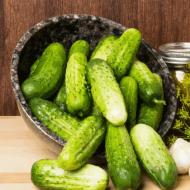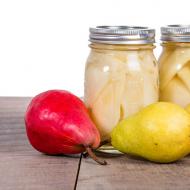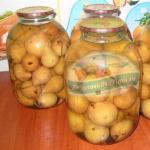
Would you like to lose weight? Then take note of the "rule of the fist
Are you eating right, but still can't lose weight? Perhaps the whole point is not what you eat, but the amount of food consumed.
Most people don't know what an acceptable serving size should look like. Studies have shown that we are bad at determining how much food we should have on our plate, and people often overestimate portion sizes and underestimate calorie content.
So how do you figure out how much to eat without endlessly counting calories or weighing everything on a scale?
How do you determine your serving size? Parents used to ask: “how many spoons do you put”, and now we ourselves are faced with this problem. It is known that there should be just enough food on the plate so as not to leave the table hungry, but also not to overeat.
How to achieve this? After all, sometimes it’s still hard to resist an extra piece of the pie.
Experiment
Scientists from the American University conducted an experiment on the weight assessment of the weight of food by eye. It involved two groups of subjects: doctors and people far from medicine.
As a result, it was determined that, regardless of education, the difference in estimating the number of grams on a plate compared to the actual amount was from 22 to 48%. This means that a person cannot always determine by eye the serving size in grams that he is going to eat. From this it turns out that the calculation of the number of kilocalories (a fairly popular method of losing weight) is not always adequate and corresponds to what is actually eaten. Be that as it may, it is not always the same to weigh products on a kitchen scale. The way out of this problem was simple.
What will overeating lead to?
No one is immune from overeating. And in the case of eating an excessive amount of food, a person feels heaviness, he is not disposed to work, thought processes are inhibited, laziness appears. Because the body throws all its forces into overcoming and digesting a huge amount of food.
Consider the distribution of food components that entered the gastrointestinal tract (GIT).

A person needs about 1.8-2.0 g of protein per kilogram of weight per day. When used in larger quantities, amino acids and polypeptides (components of proteins) from products will not be absorbed. But there will be stagnation of food in the gastrointestinal tract, the processes of decay will begin. Obstipation (constipation) may occur. Signs of impaired motility of the gastrointestinal tract appear on the skin of the face. The work of the glands is disrupted. And this most often leads to the appearance of an inflammatory rash.
The situation is different with carbohydrates and fats. All of them are used by the body for its needs. At the same time, the amount of fats and carbohydrates eaten is distributed according to the needs of the body. These components are used for:
1) digestion of incoming products;
2) brain work;
3) providing a basic level of cell activity (this is the minimum amount of energy that is necessary to maintain vital activity);
4) performance by cells of their special functions that require increased energy costs;
5) contractions of skeletal muscles;
6) accumulation of glycogen in the liver and muscles.
After a meal, carbohydrates in the gastrointestinal tract undergo many changes. They are eventually broken down into glucose, which is absorbed into the blood in the small intestine. Thanks to insulin, it enters all cells of the body. And in the brain, liver and muscles, its intake is determined by the concentration gradient. The more glucose circulates in the blood, the more it will enter these organs. If you overeat, then the amount of glucose will increase dramatically, and the consumption of its organs will increase accordingly. Muscles and liver will accumulate glycogen (normally, the muscles of a woman weighing 65 kg contain 400 grams of glycogen). If there is a lot of this glycogen, it begins to enter fat cells, from where it is very difficult to pull it out.
The same thing happens with fats. But when one gram of carbohydrates is broken down, 9 kcal of energy is released. For proteins and fats, this figure is 4.1-4.3 kilocalories.
Therefore, the portion size with proper nutrition should correspond to the needs of the body.
Determine portion size:
I The simple method
The easiest way to determine the required weight and volume of food is "fist rule". The volume of the stomach in a calm state (on an empty stomach) is equal in size to a fist.

In order not to overstretch the muscular walls of the stomach and not lead to its excessive activity, it is necessary to put in it exactly as much as it can withstand. At the same time, eating should stop when the food on the plate ends. You can’t report to yourself “several fists” in one meal. To do this, it is better to remove pots and pans away from your eyes.
II Precise method
There is another method for determining your volume of food eaten. He is heavier. But using this method, you can more accurately determine the serving size in grams. It must be remembered that:
1) the palm of an adult woman is equal to 100 grams of white meat (chicken or fish);
2) 200 g occupy the same volume as a woman's fist (the same amount in one glass);
3) half a teaspoon the size of a thumbnail (this is 5 grams), for example, how much sunflower oil should be consumed per day;
4) 10 g is placed in a tablespoon (the area of two nails of the thumbs);
5) a handful of one palm holds two tablespoons of liquid; a portion of salad, porridge, pasta is also placed here.
1) protein food should be the size of a palm;
2) a vegetarian plate (fruits, vegetables, salads without dressing) can be the size of a fist;
3) the part that falls on complex carbohydrates is equal to one palm;
4) two phalanges of the thumb are equal to the amount of fat on the plate.
In order to lose weight without harm to health and at the same time not feel hungry, it is necessary to reduce the energy return of food by 500 kcal. Based on these calculations, a person needs a day: three palms (two protein and one carbohydrate), three fists and one phalanx of the thumb. To satisfy the feeling of hunger, you can increase the vegetable portion.
conclusions
Correctly determining the size of a serving of food without scales is simple. You only need your hands for this. Which method to use depends on the preferences of the individual. The only common thing is that overeating has a bad effect on the state of the body and human health in general.
Here's an easy way to determine the appropriate serving size for staple foods and how it looks in relation to your hand size.
Meat serving size - palm of hand

A serving of meat should be the size of the palm of your hand (not including fingers).
The steak in the photo weighs approximately 100 grams and is about the thickness of a deck of cards. This size serving of protein can be taken with every meal, and we need to spread our protein intake throughout the day as we process it better in small portions. However, you should not consume more than 500 grams of red meat per week, and it is better to choose other sources of protein, such as fish and legumes.
Portion of white fish - the whole hand

White fish such as cod, haddock or pollack are low in fat and calories, so a serving can be as large as your spread brush (about 150 grams and 100 calories).
White fish contains small amounts of omega-3s and is a good source of selenium, which is important for the immune system and healthy hair and nails.
Portion of oily fish - palm

Like meat, fatty fish like salmon, mackerel, or sardines should be about the size of your palm. An oily fish fillet weighs about 100 grams and contains about 200 calories. One serving a week will provide you with enough omega-3 fatty acids.
A serving of salad, let's say Spinach - two handfuls

This is how much raw spinach one person needs for one (80 grams) of the 5 servings of vegetables recommended daily. The same serving size will work for other lettuce leaves as well.
Vegetables should be eaten with every meal, and not a few leaves, but practically the entire package.
Serving of berries - two palms

One in 4 servings of fruit a day is a handful of berries that fits in the palm of your hand.
This amount of berries contains approximately 90 calories, but other fruits, such as grapes, contain more sugar and about 161 calories.
Portion of vegetables - clenched fists

One in 5 servings of vegetables (80 grams) per day should be at least the size of your fist. It is also important to aim for a variety of vegetables in your diet and eat vegetables of different colors. Vegetables should take up half of your plate.
Serving of pasta per day - clenched fist

This amount of pasta seems very small, but the pasta will increase in size when cooked. This serving contains 75 grams and 219 calories. A serving of uncooked rice should also be the size of a fist.
Carbohydrates, which are important for maintaining energy, and fiber should take up a quarter of your plate (proteins another quarter and vegetables half).
Additional calories will add sauce.
Serving of nuts per day - one palm

Nuts and seeds are a good snack, they are filling and contain heart-healthy unsaturated fats, although they are high in calories. A good portion is what you can hold in the palm of your hand. Therefore, try to eat nuts and seeds separately, and not several at once.
Portion of potatoes - fist

A carbohydrate serving should be approximately 200 calories for women and 250 calories for men.
One 180 gram potato contains about 175 calories, but a baked potato can be twice as much, so you can split it between two.
If you are not trying to lose weight, you can eat a slightly larger portion.
Food portions per day
Butter - tip of the thumb

Any portion of fats, including butter, vegetable oil, peanut butter, should be no more than a teaspoon or the size of the tip of your thumb from the knuckle to the tip of the nail. In total, there should be no more than 2-3 servings of fat per day.
Chocolate - index finger

A piece of chocolate the size of an index finger (20 grams) contains approximately 100 calories and is an adequate treat.
Cheese - two fingers

A serving of cheese weighing 30 grams should correspond to the length and depth of two fingers. It contains about 125 calories and provides you with a third of the recommended amount of calcium. A serving of grated cheese can be the size of your fist.
Cake - two fingers

The cake slice should be two fingers long and wide (one end may be slightly wider if you cut with a wedge). This serving contains about 185 calories and is acceptable as a treat.
Additional information - What should be the size of the serving of food
All types of meat (most often consumed beef, pork, poultry), as well as fish, should be consumed in an amount of no more than 150 grams.
If we are talking about cutlets and steaks, outwardly this portion looks like 3 decks of cards as thick as a palm.
A serving of meat in terms of energy value can be replaced with one egg, 130 grams of beans or 2 tablespoons of peanut butter.One egg counts as one serving.
The term serving for ready-made pasta, buckwheat, oatmeal and millet porridge means 250 grams (a small cup). Therefore, when preparing your favorite oatmeal for breakfast, pouring a portion of cereal with milk or boiling water, control how much a hearty breakfast enters your body. Manufacturers recommend consuming one glass of dry mix, while nutritionists agree that servings should be limited to ¾ cup. If the flakes are filled with milk, their amount should be reduced to ½ cup. But, of course, when choosing the size of a serving of food for breakfast, you need to consider whether your weight is normal, or if you are trying to lose weight.
An exception from the "large" family is rice, the recommended portion of consumption will be 100 grams.
With regard to bakery products, it is better to give preference to whole grain bread in an amount of no more than one piece 1 centimeter thick. A small bun, one pancake, cupcake or pie has a similar content of nutrients.
The daily intake of vegetables is 3-5 servings, fruits - 2-4 servings.
When choosing fruits, pay special attention to sweet fruits, their number should be reduced. There are norms for this category: one banana or one orange, a small slice of melon or watermelon, ½ cup of berries or canned fruit, ¼ cup of dried fruit.
You should not abuse nuts, because of their high calorie content, no more than 30 grams should enter the body - a handful of a small child.
Vegetable oils and fats that we add to salads must also be controlled. In order to reduce their consumption per bottle of oil, it is better to install a sprinkler, then you can meet the daily allowance of 1 teaspoon.
Confectionery is the main enemy of our figures. Favorite summer treat - ice cream in its quantity should not exceed the size of a tennis ball. Other sweets should be completely excluded from the diet.















